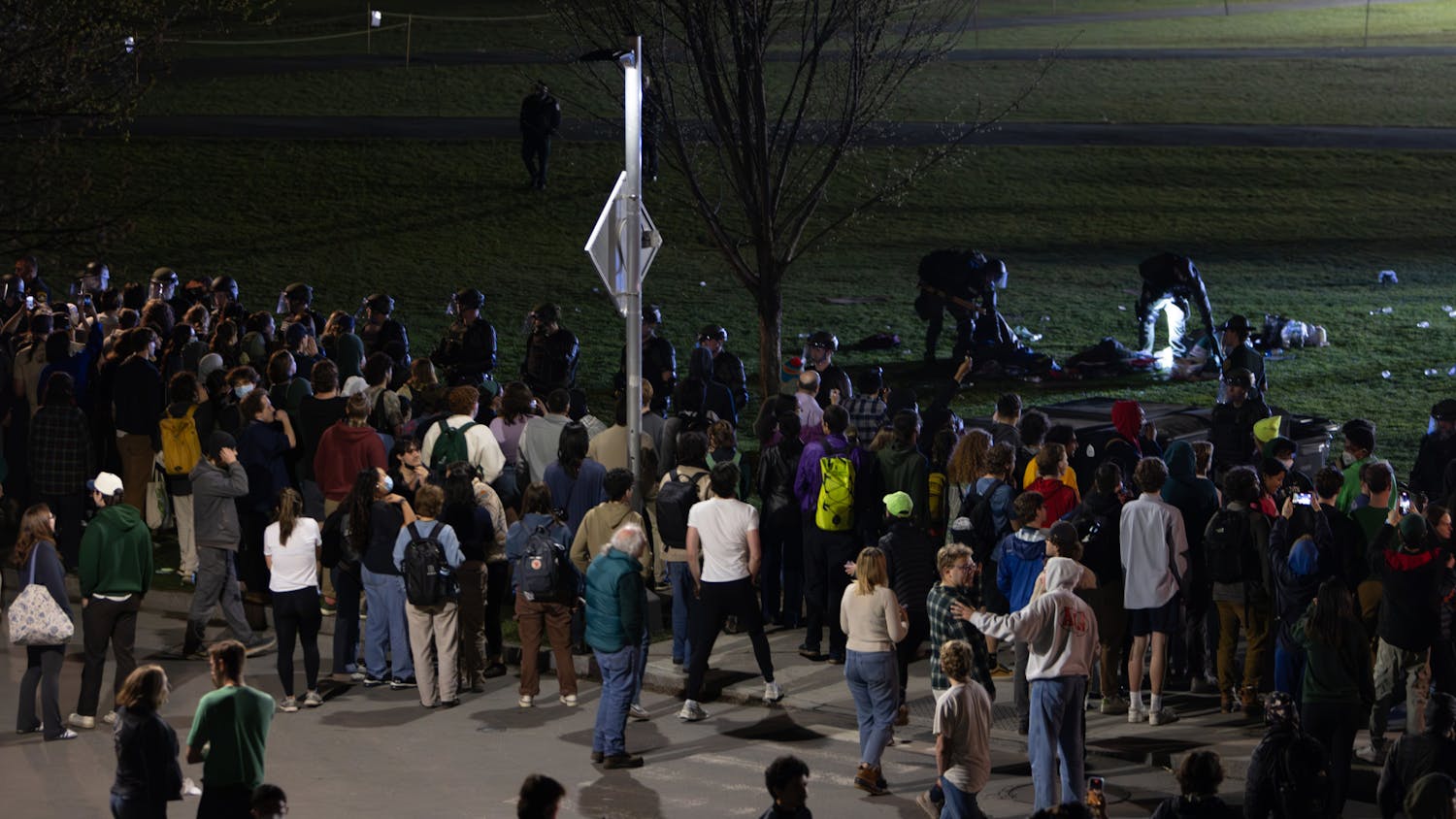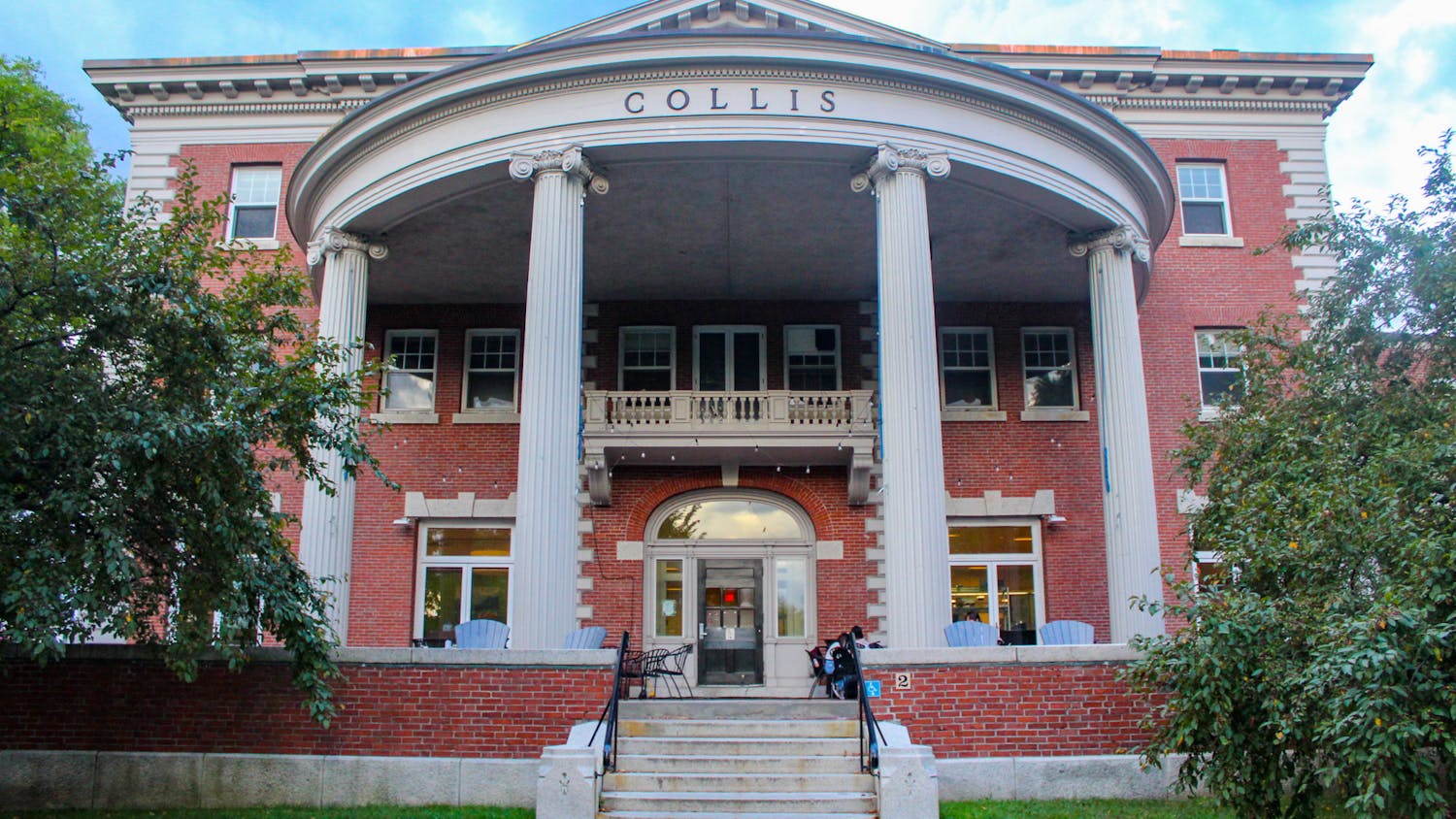Only 7 percent of the student body has downloaded the LiveSafe app, introduced to campus this fall to facilitate students’ seeking help when threatened on campus. Safety and Security director Harry Kinne and LiveSafe engagement partner Maili Neverosky said their goal going forward is a more aggressive marketing plan.
The app was first suggested in College President Phil Hanlon’s “Moving Dartmouth Forward” policy initiative in January. The initiative said the College would develop a Dartmouth-specific safety smartphone app for students to seek assistance if they ever felt in danger.
“Dartmouth is actually being progressive in bringing technology like this to campus to make it safer for students and faculty,” Hanover Police Chief Charlie Dennis said.
Features of the app include being able to chat with a Safety and Security officer, report incidents anonymously and directly to Safety and Security and speed dial both Safety and Security and 911. The app also allows a friend to track someone on a map as they go from one point to another if they are concerned about that person’s safety and compiles safety information about the College from various websites into one place.
Neverosky said that LiveSafe’s goal with its apps is to make campus a safer place for students to live and learn.
“We want to put them in an environment where they are safe, where they’re not worried about everything from active shooters to sexual assault,” Neverosky said.
LiveSafe has apps on campuses at over 100 universities in 30 states and is sold to the universities as a safety technology platform.
At Dartmouth, only 309 students — 7 percent of the student body — has downloaded the app, Neverosky said.
Kinne said that Safety and Security plans to run a marketing campaign soon to try to increase the number of people who download the app so that students use it for next term.
Marketing events held by other universities include scavenger hunts and raffles, Neverosky said.
Neverosky said that a check-in between the College and LiveSafe is planned soon to discuss ways to hit a 15 percent download benchmark by four to six months after the unveiling of the app.
“We like to check back in and say, ‘Hey, how’s it working, what can we do, is there something we can create or do to help support you?’” Neverosky said.
Even on a safe campus, the app is useful from a sexual assault standpoint because it helps cover the gray area in bystander intervention, Neverosky said.
So far, Kinne and Dennis have discussed the app during a presentation they gave to freshmen during Orientation about safety, sexual assault and underage drinking on campus, Kinne and Dennis said.
Kinne said Safety and Security also talked to undergraduate advisors and asked them to download the app as well.
There have been a number of people who have used the app so far to make Good Samaritan calls and to report other incidents to Safety and Security, Kinne said.
“It’s been very helpful,” Kinne said.
Most of the reports so far have been anonymous, Kinne said.
“What is most important is that people have reported things,” Kinne said.
Looking forward, Kinne said the app will be updated with new information over time.
“We hope that as people become familiar with it, people will find it something that they want to use while on campus,” he said.
While the app does not replace someone’s cellphone as a method of communication, Kinne said it could be helpful if someone was in a situation where they had trouble communicating but wanted their location to be tracked, which he said would be “beneficial to first responders.”
Kinne said he thinks the Hanover Police appreciate the app as another way to communicate, both with Safety and Security and with students through the 911 feature.
Dennis said the Hanover Police heard about the app for the first time at a meeting this summer, where they saw a demo and were asked for input. The Hanover Police Department communication supervisor had one suggestion related to the 911 feature, but other than that the police approved of the app, Dennis said.
Out of five students interviewed for this article, four of them had heard of the app but had not downloaded it and one had not heard of it.
The four students who had heard of the app all said that they would download the app, but had not yet just because they had forgotten to or had not thought about it enough because they perceive campus as safe.
“Yes I would download it because it’s a safety app, but if it came to the point here I had to call 911, I wouldn’t think about the safety app. I would just call 911,” Shashwat Kala ’18 said.
Caitlin Flint ’16 said she has not heard of the app and that she would not download it because of her lack of interest of having apps on her phone in general.
“If I need to call [Safety and Security], I have them in my speed dial,” she said.
Neverosky said one of the biggest factors in getting students on board with the app is hearing about it from their peers and not just from Safety and Security or faculty. She said if LiveSafe cannot make the app relevant and convince student organizations to buy in and use it, the app will not be used by campus.
Neverosky thinks the best way to do this is to find a student group that wants to take the spread of LiveSafe on as an initiative. Tapping into student leadership will also help LiveSafe learn what works and what does not, she said. The app allows students to step in silently and stick up for their friends without having to call themselves out, she said.
One of the founders of LiveSafe was the survivor of a campus shooting at Virginia Polytechnic Institute, and the other was the victim of armed robbery, making the purpose of the app personally meaningful, Neverosky said.
This fall, Safety and Security also unrolled two other safety initiatives: DartAlert, which sends emergency messages to cell phones, and DartAlert Desktop Alert, a computer software that will pop up on computer screens if Safety and Security sends out an alert.
This November, they will roll out the outside map notification system, which is a set of two speaker siren systems that will be used in conjunction with DartAlert and Desktop Alert if there is an emergency.



